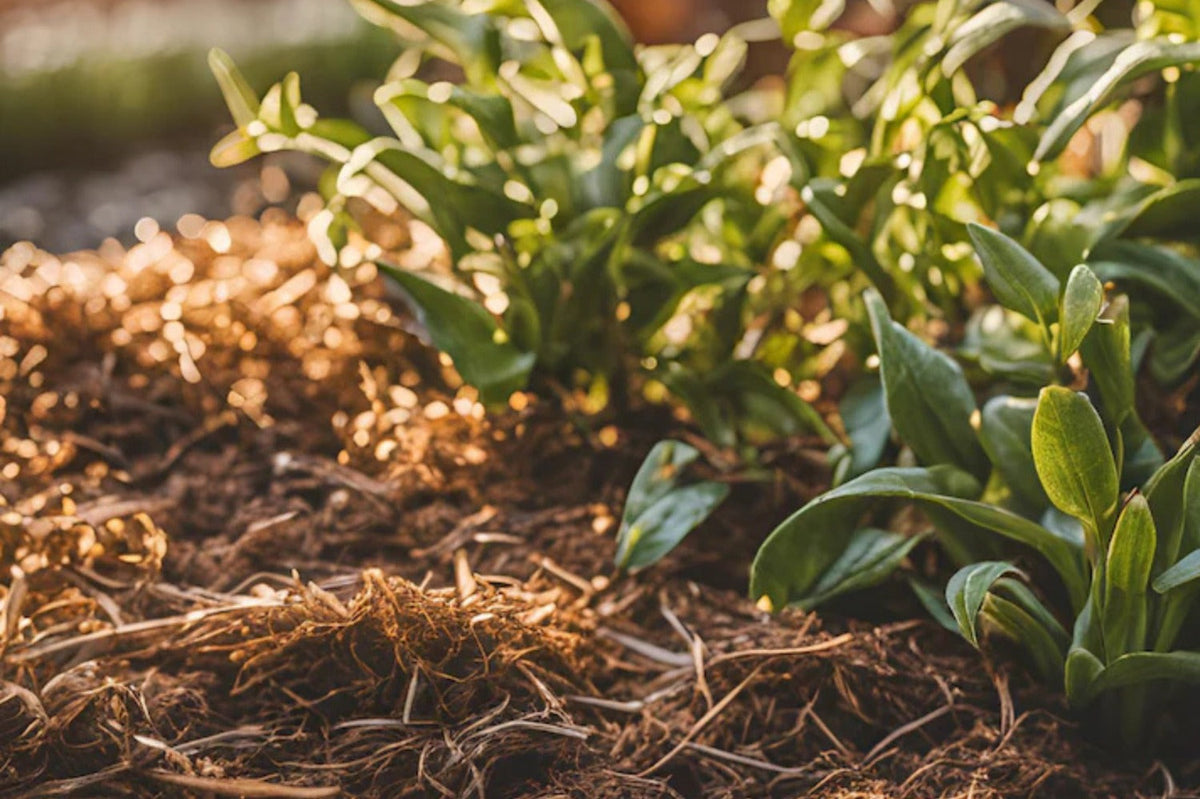
Mulching: the secret to less weeds and less water
|
Tijd nodig om dit artikel te lezen: 3 min
|
Tijd nodig om dit artikel te lezen: 3 min
Mulching: either you have been using it in your garden for a long time or you can hear it thundering in Cologne. Or maybe you know vaguely what it is, but you are a bit afraid of the word. However, that is not necessary, because mulching is a simple and very effective technique to improve the quality of the soil and to prevent weeds. Moreover, you can mulch with simple materials that do not have to cost much.
Mulching means that you apply a protective layer to the soil in the garden. This layer consists of organic material and its main function is to protect the soil from the elements and to make the soil more airy and healthy. You see the structure of the soil improve year after year and less weeds grow. Win-win, right?
Think of mulching as an extra blanket for the soil: it keeps the heat in and the cold out and it covers the light.
Retain moisture
A mulch layer ensures that the soil dries out less quickly. The moisture present remains in the soil longer, so that you also have to water less often in the summer.
Control temperature
In winter, a layer of mulch keeps the soil warm for longer and protects it from harsh conditions; in summer, mulch acts as a good insulator against heat.
Better soil quality
Regular mulching makes the soil more airy, provides more food, humus and ultimately more soil life.
Less weeds
The sunlight no longer reaches the ground directly, because a mulch layer shields it like a parasol. Result: weed seeds have much less chance to germinate. And new seeds that fall on top of the mulch layer do not come into contact with the soil, so that they cannot germinate either.
Less erosion
Mulching helps to improve the structure of the soil, which makes it less likely to become silted up or washed away. Less chance of erosion due to rainfall.
Mowed grass
Grass is by far the cheapest way to mulch. Mow, spread, done. Make sure not to spread the grass layer too thickly, because then it will start to ferment. Better to spread a thinner layer of 5 cm, wait until it has dried out and then repeat.
Straw
Straw is easy to obtain and not expensive. It is a suitable material for mulching, but if you get a straw bale of poor quality you can end up with a lot of (weed) seeds. And all those germinating plants are exactly what you want to avoid with mulch.
Wool
A mulch layer that you might not immediately think of yourself, but it is an effective type of mulch. Sheep wool retains moisture well and takes away sunlight, which means that weeds have less chance of germinating. The disadvantage is that snails sometimes dare to hide there from the rain.
Bark or wood chips
Wood chips, twigs, pruning waste, bark: they can all be used for mulching. Bark has the image of increasing the acidity of the soil for many people, but then you really have to have thrown around a lot of coniferous bark, and that is not so bad for most people.
To leaf through
Many people seem to have the tendency to do a big clean-up in the garden in the fall . However, fallen autumn leaves are the perfect mulch: collect them from the grass or the pond and spread them in the borders.
Did you know that we also have a well-stocked YouTube channel? With over 450 videos, we have a large database of information. Be sure to check out YouTube and subscribe, so you can stay up to date with the latest videos.
In this video Angelo explains what mulching is and why everyone should do it in the garden.
Mulching can be done all year round, but it is certainly a good idea in the fall: you then protect your soil extra against the winter. Don't let that stop you from mulching the rest of the year, even in flower pots in the spring! The tip about drying out less quickly also works perfectly there.
Mulching is not difficult. You spread the organic material in a layer over the soil.
Important:
Mulching is a simple and effective technique that everyone should embrace. Whether you want to protect your garden from drought, suppress weeds or improve the structure and fertility of the soil, mulching offers the solution. The result: a healthier garden with less maintenance.



